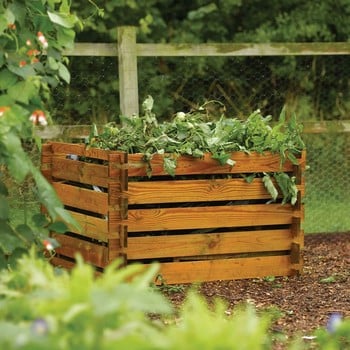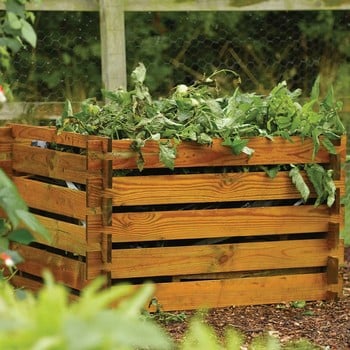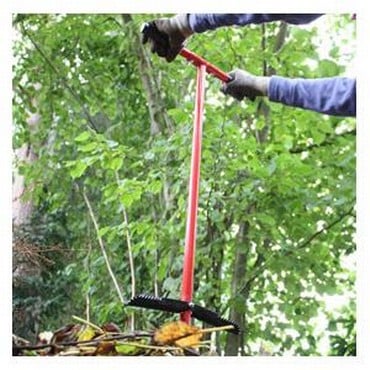Rowlinson Allotment Compost Bin
The Rowlinson Wooden Allotment Compost Bin is a cost effective, stylish way to contain your compost heap. Made from 16mm FSC planks that easily slot together and provide plenty of air circulation to aid the composting process.
Read More
The Rowlinson Wooden Allotment Compost Bin is a cost effective, stylish way to contain your compost heap. Made from FSC planks that easily slot together and provide plenty of air circulation to aid the composting process.
Stylish wooden compost bins needn't cost a fortune as proved by this simple design Budget Compost Bin that will blend into any garden or allotment and keep your compost nice and compact. The gaps between the FSC timber planks will ensure plenty of air circulation to aid the composting process and the high pressure treated timber will withstand water and prevent rotting.
- Rowlinson Allotment Composter
- Quick and easy assembly
- Pressure treated natural timber finish 16mm thick planks
- External measurements 1m x 1m and stands 60cm H
- Internal measurements 865mm x 865mm
- Hold approx. 439 Litres of compost
- This product is supplied as a kit for easy self assembly
Product Reviews
The concept is good and it is easily assembled. The only drawback is its lack of lower access for dispensing mature compost. The material seems to be of good quality treated wooden slats and should last a good number of years.
What can go in to a conventional bin and how does it all work?
Success depends on heat, biology and a good balance of ingredients, added in approximately 10cm. layers. ‘Green’ waste (grass, border and hedge trimmings, snipped or shredded woody prunings) heats up steamily, starts to break down rapidly and can be stirred into layers below to speed everything up. ‘Brown’ waste (e.g. shredded paper, packaging and straw) should be added at regular intervals to counteract the wetness of the greenery and will rot down too. Manure from herbivores (chickens, pet rabbits) adds zest to the whole mixture, as does the odd spadeful of soil.
Autumn leaves are best composted on their own in hessian bags or cages, since they rot down more slowly and in a different way.
What shouldn’t go in?
Moss (which refuses to rot and can therefore be unwittingly spread around)
Seeding weeds or garden thugs (i.e. Verbascums, Fennel) Roots of perennial weeds such as ground elder and bindweed – unless they are thoroughly dried off in the sun first. Cat and dog (i.e. carnivore) manure. Meat or cheese kitchen scraps or vegetable waste that has been contaminated by them.
Common problems
Too dry? Water the heap and/or add more greenery and cover it tightly to keep the heat in.
Smelly? Add more ‘brown’ ingredients, but no grass clippings or kitchen waste for a while. Stir the contents to open it up. Leave the lid off.
Rats? This is a tricky one - they may try to move in if there is a regular source of food nearby (i.e. a bird table or poultry house).
Slugs and snails? No problem. They are doing their bit for the composting process, and at least it keeps them away from your lettuces and hostas.
What The Press Say
Grow Your Own10-08-2013
Pick of the Crop - Turn your garden waste into mulches with these must-have composters
This simple, attractive wooden composter blends into any plot. The 1m x 1m bin stands 50cm high. Gaps between the wooden slats boost the composting process by encouraging air circulation. The pressure-treated FSC timber planks withstand water and reduce rotting.
Your Home Magazine Website1st June 2009
10 of the Best Compost Bins
Featured as one of the 10 Best Compost Bins






























